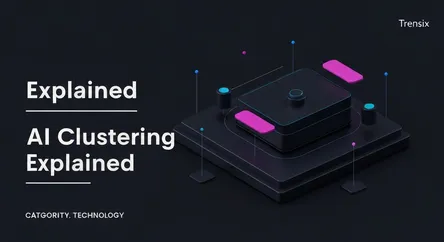Technology
AI Clustering Explained

Discover AI clustering, an unsupervised learning method that groups similar data points to reveal hidden patterns and insights without human labels.
What is it?
Clustering is a core technique in unsupervised machine learning where an AI algorithm groups a set of data points in such a way that objects in the same group (called a cluster) are more similar to each other than to those in other clusters. Unlike supervised learning, it doesn't use pre-labeled data. Instead, it discovers natural groupings and hidden patterns based on the intrinsic properties of the data itself. Common algorithms like K-Means and Hierarchical Clustering work by measuring the distance or similarity between data points, iteratively organizing them into distinct, logical clusters.
Why is it trending?
Clustering is trending because of the explosion of big data. Businesses and researchers have access to massive datasets, most of which are unlabeled. Clustering provides a powerful, automated way to make sense of this raw data without the costly and time-consuming process of manual labeling. It's a fundamental tool for exploratory data analysis, enabling organizations to identify market segments, detect anomalies, and understand complex systems. Its versatility makes it a cornerstone of modern data science and business intelligence strategies.
How does it affect people?
Clustering impacts daily life in numerous ways. It powers recommendation engines on services like Spotify and Netflix by grouping users with similar tastes. In marketing, it's used for customer segmentation, allowing companies to create targeted campaigns. Search engines use it to group similar documents, improving search results. In biology, it helps classify genes with similar functions, and in finance, it can identify fraudulent activities by flagging transactions that deviate from normal clusters of behavior. It's an invisible engine that helps personalize experiences and enhance security.